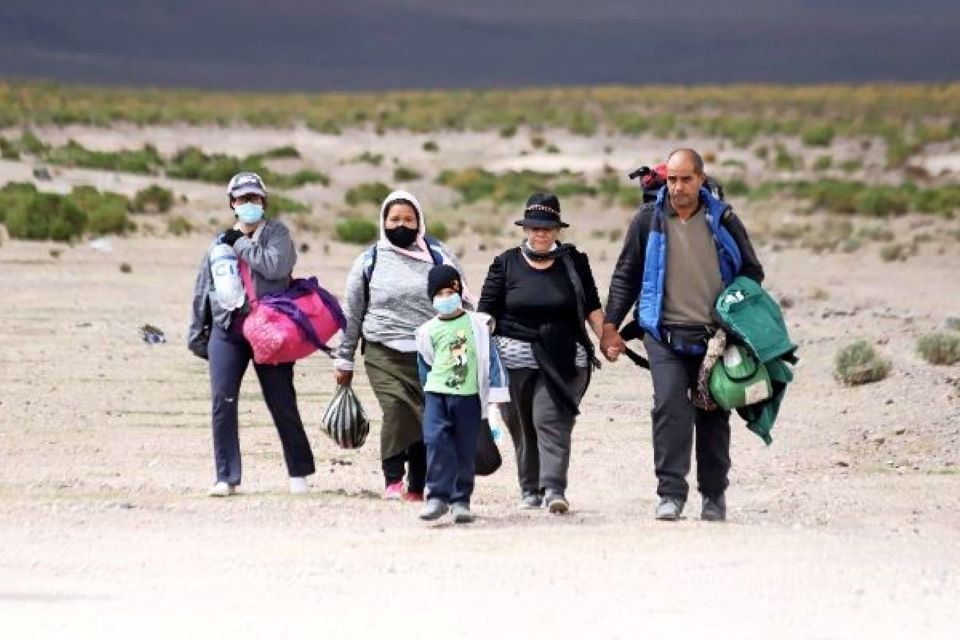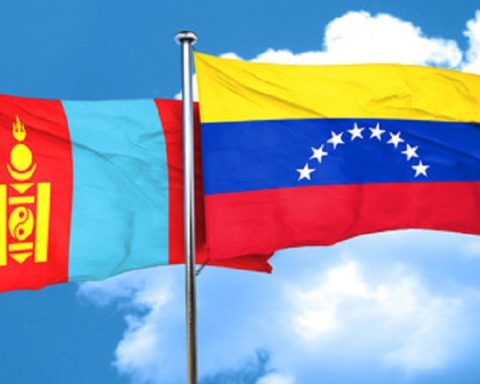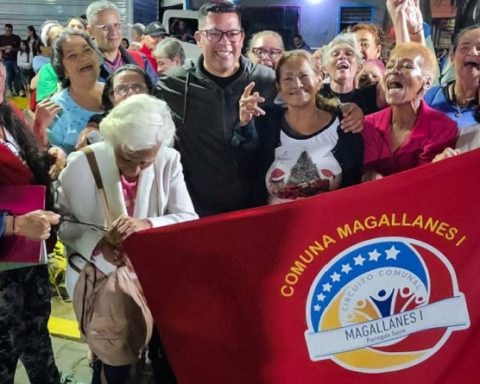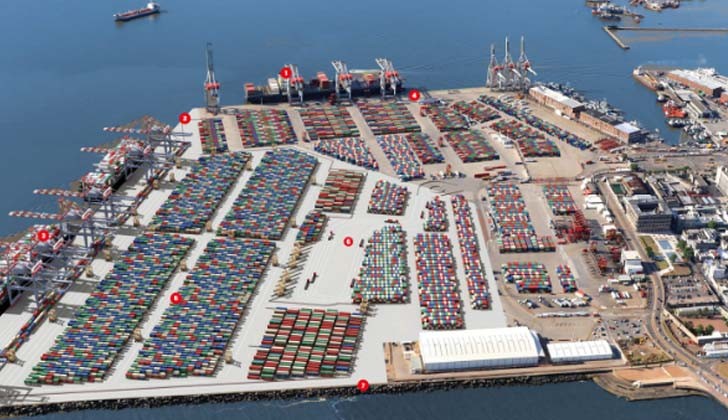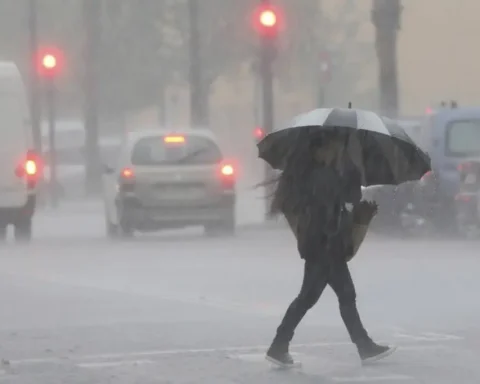InSight Crime’s Venezuela Observatory examines the extent to which the Aragua Train has spread across South America, making use of the routes followed by Venezuelan migrants. The group not only captures vulnerable Venezuelans before leaving their country, but also has a presence along the route that runs through Colombia, Peru, Bolivia and Chile.
Text InSight Crime | Laura Avila
The US-based foundation, InSight Crime, published this Monday, July 25, an analysis in which they conclude that the Venezuelan megabanda Tren de Aragua “took advantage of the vulnerability of the diaspora of Venezuelan migrants to profit from their trafficking and exploitation, and they did so by using the influence they had acquired in various countries of the region and the alliances with other criminal networks. They identify Chile “as the new conquered territory.”
“El Tren de Aragua, the largest gang in Venezuela, has become a transnational criminal threat. The group, an expert in migrant smuggling, human trafficking and extortion, has followed the trajectory of the exodus of Venezuelan migrants and has found a way to establish permanent operations in several Latin American countries. Recently, it has become clear that the group has expanded its influence in Chile, becoming a security concern for Chilean authorities.”
They cite the case that recently spread to the media in several countries from a Venezuelan family of three members who suffered extortion and kidnapping by the criminal group in Bolivia to force the father to traffic drugs to Chile.
The Venezuelan man was arrested by the authorities in Oruro (Bolivia) and is currently in preventive detention. The whereabouts of his wife and daughter remain an enigma, but it is presumed that they could be victims of human trafficking.
The reality of this family has become increasingly common in Bolivian cities such as Pisiga, on the border with Chile, and in Santa Cruz de la Sierra, La Paz, Cochabamba and Oruro. There, it has been reported that the mega-gang is kidnapping undocumented migrant women in a vulnerable condition and they are transferring them to Chile to sexually exploit them, assured the El Deber media outlet, quoted by InSight Crime.
The Chilean authorities, for their part, spoke out days after this case came to light.
On July 11, Javier García, the mayor of Colchane, a Chilean city on the border with Bolivia, stated that the Aragua Train uses the commune’s border for human trafficking and the entry of drugs and weapons into the country. Additionally, in March 2022, the Tarapacá Prosecutor’s Office, in the northern region of Chile bordering Bolivia, reported that cells of the group operate in the country and are dedicated to committing crimes such as homicide, kidnapping, migrant smuggling, human trafficking. for purposes of sexual exploitation and extortion, among others.
The Tren de Aragua is the most powerful megagang in Venezuela, and was considered by InSight Crime to be one of the most important criminal groups in the region. Although it has its main enclave in the Tocorón prison, located in the state of Aragua, it has managed to expand its tentacles to other Latin American countries.
InSight Crime’s Venezuela Observatory has been able to identify that the Aragua Train participates in human trafficking and migrant smuggling in Colombia, Peru, Bolivia, and Chile, the latter being the dream destination for Venezuelan migrants due to its economic conditions. In this country, the media began to report the actions of the group since June 2021, and by October of this year there was confirmation that the criminal group would have a presence in the country.
InSight Crime has tried to confirm the links of these cells in Chile with their main enclave in the Tocorón prison in Venezuela, but it has not yet been possible to establish if there is a direct relationship between them. This could be because the group is known for operating under a franchise model and subcontracting from other criminal groups and gangs.
InSight Crime examines the extent to which the Tren de Aragua has spread across South America, making use of the routes followed by Venezuelan migrants. The group not only captures vulnerable Venezuelans before leaving their country, but also has a presence along the route that runs through several countries in the region before reaching its final destination in Chile.
InSight Crime identifies the Tren de Aragua as part of a trafficking network from Colombia to Chile.
Countries of origin: Colombia and Venezuela
The modus operandi The group begins with the capture of its victims, generally undocumented Venezuelans, who are in Venezuela, Colombia or on the trails, or border crossings, that connect both countries.
«In cities like Cúcuta (Colombia) there are people who arrange the whole trip for you and capture, above all, minors. They make all the passes through the trails until you reach countries like Peru. All the complaints that have come to me involve the Aragua Train,” an expert on migration issues who operates on the Colombian-Venezuelan border told InSight Crime, asking not to be cited for security reasons.
In this way, in countries like Colombia, the Aragua Train has been involved in migrant smuggling, promising the illegal transfer from one country to another, even passing through several countries. However, in Chile, the group would also be venturing into the crime of human trafficking, where the person is held against their will using force or other forms of coercion to force them to provide services, usually sexual.
It has been identified that these crimes are correlated and there are alliances between criminal groups to capture the victims and take them through illegal border crossings.
For example, in the month of March 2022, in Puerto Montt, a port city in southern Chile, a gang associated with the Aragua Train was dismantled, which captured women in Colombia and Venezuela. Once they arrived in Chilean cities such as Talca, Temuco or Puerto Montt, they were informed about a millionaire debt that they had acquired for the trip and that they had to pay by providing sexual services.
Additionally, the recent case of the Venezuelan family victim of this mega-gang reveals two aspects about the operation of human trafficking. On the one hand, that the capture of victims is not only done in Colombia and Venezuela, but also occurs in countries like Bolivia through kidnappings. On the other hand, although the main victims of this crime are women and girls, men are reportedly being recruited to traffic drugs in exchange for reuniting with their families.
The Aragua Train is taking advantage of the precarious conditions of entire families to obtain more profits.
Modus operandi: interconnected networks
The migrant smuggling and trafficking route that runs through several countries in the region starting from Colombia is achieved through an interconnected network of coyotes and criminal gangs through which migrants are received and captured in different countries of the region.
«What exists is a network that comes from Venezuela, crosses Colombia, Ecuador, Peru, Bolivia and finally reaches Chile. In Bolivia there are actually two edges: one that goes directly to Brazil and the other to Chile. They are networks that are interconnected, that support each other, receive migrants in different areas and direct them to the place where they are directed. It is not a national network, but rather an international network that is dedicated to this,” Hardy Torres, chief deputy prosecutor of the local Tamarugal Prosecutor’s Office in Chile, told Ciper.
In Colombia, the Ombudsman’s Office has reported that the Aragua Train carries out the transfer and recruitment of migrants in alliance with the Los Rastrojos criminal group, present in the border department of Norte de Santander.
In Peru, the media have reported on the existence of human trafficking networks in which Venezuelan citizens participate, who pay the Aragua Train so that their victims can be sexually exploited in the areas where prostitution is practiced and which are currently being controlled by this megaband.
“The Aragua Train is involved in extortion of hostels where sex workers are, small merchants, motorcycle taxi drivers who carry three passengers. They extort money in exchange for security, it was Peruvian and Colombian gangs that controlled the area, now it is the Aragua Train. There is confirmation that they control the districts of Independencia and San Martín de Porres in the city of Lima,” Jaime Antezana Rivera, a drug trafficking and organized crime investigator in Peru, told InSight Crime.
And in the case of Bolivia, it has been identified that in Pisiga, a Bolivian urban town, located on the border with Chile, is where the “trocheros” or coyotes are found who offer to help migrants cross in exchange for money. On the Bolivian side and on the other side of the border, in Colchane, it has been identified that the Aragua Train exercises control over irregular border crossings.
The northern zone of Chile: the gateway for migrants
Chile’s northern macrozone, which encompasses four regions – Arica and Parinacota, Tarapacá, Antofagasta and Atacama – has become the gateway to Chile for irregular migrants seeking better economic opportunities and a new life.
A recent study revealed that in this area irregular incomes went from 2,905 in 2017 to 56,586 in 2021. But of these regions, the most affected by the arrival of migrants and violence has been the Tarapacá region and in particular the border crossing of Colchane.
The crossing is made from the town of Pisiga in Bolivia to Colchane in Chile. There, the Aragua Train has taken advantage of this desert territory, porous and with little institutional presence, to control irregular crossings, said Pilar Lizana, an Athenalab researcher and security specialist in an interview with InSight Crime.
And it is precisely Tarapacá – the region where the migration crisis has been concentrated since 2020 – where homicide figures have also skyrocketed. According to information from the Chilean Center for Analysis and Crime Studies, in 2021 this area had a homicide rate of 9.7 per 100,000 inhabitants, exceeding the national rate of 3.5 per 100,000 inhabitants.
And although the figure could be underestimated when compared to homicide data from other countries, in Chile this violence is a new phenomenon. “We are observing an increase in homicides and the data we have is that six out of ten homicides are carried out with a firearm and 70% of them are due to settling accounts,” Lizana assured. It is presumed that the wave of violence could be linked to a struggle between local and international gangs for control of this strategic area.
https://www.youtube.com/watch?v=pu_IP2MnFqc
Post Views:
368
